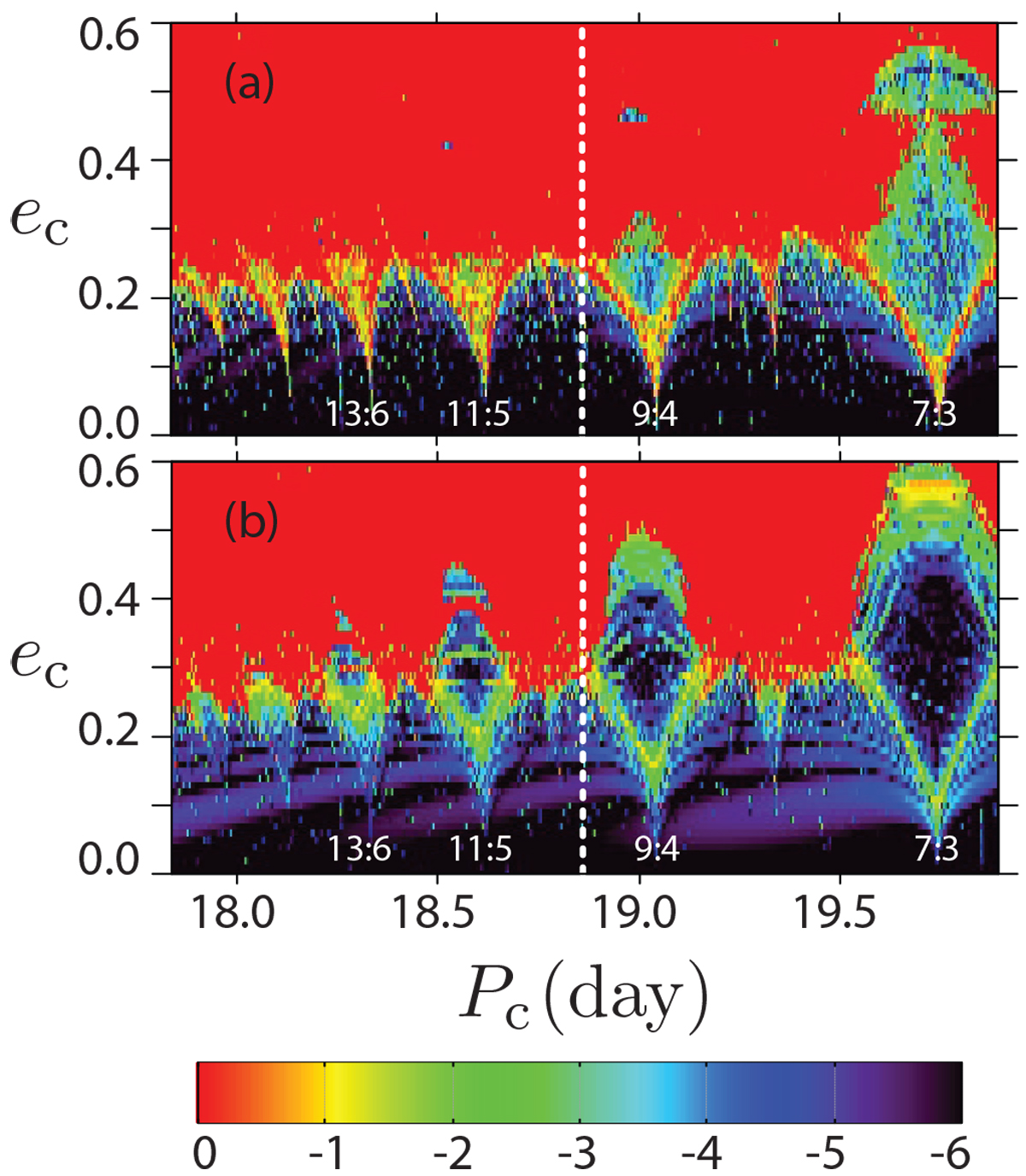Fig. 8

Stability analysis of the AU Mic planetary system, around the best fit solution (Table 4), with Mc = 25.0 M⊕ (a), and Mc = 2.2 M⊕ (b). The phase space of the system is explored by varying the semi-major axis ac (and thus the period Pc) and eccentricity ec of the outer planet; ec is plotted as a function of Pc and not ac, as the uncertainty on ac is larger. For the initial conditions, the step size is 0.01 in eccentricity, and 2 × 10−5 au in semi-major axis. For each initial condition, the system is integrated over 5 kyr and a stability criterion is derived with the frequency analysis of the mean longitude. The chaotic diffusion is measured by the variation in the mean motion. The color scale corresponds to the decimal logarithm of the variation of the mean motion (Correia et al. 2010). The “red” zone corresponds to highly unstable orbits, while the “dark-blue” region canbe assumed to be stable on a billion-years timescale. The main resonances in the vicinity of the solution (13:6, 11:5, 9:4, 7:3) are labeled. It should be noted that for the lower value of the mass Mc (b), the libration island is mostly stable while it is not the case for the larger value of Mc (a).
Current usage metrics show cumulative count of Article Views (full-text article views including HTML views, PDF and ePub downloads, according to the available data) and Abstracts Views on Vision4Press platform.
Data correspond to usage on the plateform after 2015. The current usage metrics is available 48-96 hours after online publication and is updated daily on week days.
Initial download of the metrics may take a while.


